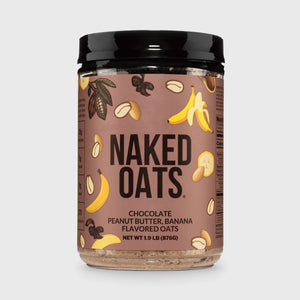There’s no doubt about it, squats are known to be the king of all lower-body exercises in the fitness world.
From helping you to gain bigger muscles in your quads and glutes, to strengthening your core, squats are one of the best exercises to help you gain both muscle and strength.
But the benefits of performing this type of exercise go far beyond just getting bigger, when performed correctly, squats can also help to mobilize your core, improve your mobility, burn calories, and more.
There are many variations when it comes to squats. While most people think of back squats to help grow their glutes, quads, and other lower body muscles, they often overlook the front squat.
While both exercises have “squat” in their name and use some of the same muscles, there are actually quite a few differences.
Read on to learn more about the differences between front and back squats, how to correctly perform each movement, and more.
Front Squats vs. Back Squats: The Main Differences

Regardless of which movement you perform, any kind of squat or squat variation can help you gain lower body muscle. When it comes to front squats and back squats, the type you should perform will depend on your goals.
The main differences between both squats remain in the position of the bar in each movement.
In the front squat which, as the name says, the bar sits on the front of your shoulders, will work your anterior chain, or the front of your body.
With this comes stress largely on your quads, but also works your core, glutes, and hamstrings. And because of the positioning and placement of the barbell in front squats, you are also working your chest muscles, upper back, and muscles in your arms as a way to support the bar during the movement.
The back squat, on the other hand, activates your posterior chain, or the back of your body.
In this movement, the main muscles worked are your glutes, hamstrings, and lower back. Secondary muscles worked include your quads and core.
Because the barbell sits on your back during back squats, people can generally load more weight than they would with front squats, making it an option for individuals looking to hit higher-weight PRs.
How to Perform a Front Squat
If done correctly, front squats are a great way to build muscle and strength.
And as with any exercise, performing a front squat correctly is the best way to get the most out of the lift.
Accurate form can also help you prevent any possible injuries that might occur while doing the movement. Follow along to see how to correctly front squat.
- Start by standing at the squat rack with the barbell in front of you about mid-shoulder height.
- Place your hands on the bar shoulder-width apart, palms facing out.
- Move closer to the bar as you bend your knees slightly until the bar is directly under your chin by your collarbone.
- While in this semi-squat position, move your elbows forward and lift them as if you are trying to point them upwards at the ceiling.
- Lift the bar to remove it from the rack and straighten your legs.
- Take a few small steps backward, keeping your feet shoulder-width apart and elbows up.
- Take a deep breath and brace your core, keeping your chest up.
- Keep the barbell over the middle of your foot and sink your hips into a squat until you reach a 90-degree angle.
- Drive through the floor to push yourself back into a standing position.
- Repeat for derided amounts of sets and reps.
How to Perform a Back Squat
Back squats can help you build strength and muscle in your hamstrings, glutes, and more. Proper form can not only help you gain the most mass but will help prevent injuries too. Follow along below as we dive deeper into how to perform a back squat.
- Step into the squat rack and dip your head under the bar until the bar is rested behind your neck and across your traps.
- Grab the bar with your palms facing forward and lift the barbell up and out of the racked position.
- With your feet about shoulder-width apart take a few small steps backwards.
- When set in place, point your toes slightly outward.
- Take a deep breath and engage your core, then slowly bend down, hinging your hips and bending your knees until you have reached a 90-degree angle.
- Once your quads are parallel to the ground press back up through your heels until you have reached a standing position.
- Repeat as desired.
Muscle Activated During the Front Squat
Various muscles are activated during a front squat with the quads being the most prominent. Other muscles are activated including the core, glutes, hamstrings, chest muscles, upper back, arms, and more.
Muscles Activated During the Back Squat
Back squats are known for building bigger and stronger lower body muscles, especially glutes. But did you know this popular lower body exercise also builds your hamstrings, lower back, quads, and core?
The Biggest Benefits of the Front Squat
There are undoubtedly benefits to both front squats and back squats. However, the benefits of doing front squats for core activation and quad development in comparison to back squats are two-fold.
Because you have to keep your body more upright and your core engaged while holding a bar in front of you, you will see more gains in your core region while doing a front squat. Six-pack abs, here we come!
Studies also show that front squats can be a better option for individuals who suffer from lower back pain.
Because your torso is more upright when the bar is placed in front of you there is less pressure on your lumbar spine. So if you suffer from lower back pain, try adding in front squats to your workout routine.
Risks and Drawbacks of the Front Squat

While front squats are an all-around good movement, there are a few notable drawbacks.
It’s no secret that athletes can generally lift more on back squats than front squats. Because you can’t place as heavy of a load on your clavicle as you can your spine, you won’t be able to load as much weight onto the bar.
So if your goal is to have extremely heavy PRs, you might want to stick with a back squat.
Another thing to note is that front squats can be harder on your knees. Because this is a quad focused movement, there is greater knee flexion. Over time, this continued movement and higher weights can cause some discomfort or even pain in the knee.
The Biggest Benefits of the Back Squat
Back squats have long been named one of the top ways to build stamina and physical and mental strength.
Truth be told, there is nothing more physically or mentally challenging than throwing a large amount of weight on your back, squatting down with it, and then bringing your body back up. And because you are loading weight onto your back, you can add a lot more weight with back squats than you can with front squats.
Because you can add more weight onto the bar, back squats are great for lower body growth. In the worlds of powerlifters, bodybuilders, and just about any other athlete, back squats specifically are the go-to exercise for getting bigger and stronger glutes.
Risks and Drawbacks of the Back Squat

Because you can load more weight onto the bar, back squats have been rumored to cause more back pain.
If done incorrectly, or too much weight is added to the bar before you are ready, you can not only cause pain to your lower back, but you may actually injure yourself.
Always ensure you are squatting with the correct form and an appropriate amount of weight for your current strength levels to prevent injuries.

Front Squats vs. Back Squats: Which is Better for Glute Muscles?
Back squats have always been part of the recipe for bigger and stronger glutes.
At its core, the back squat targets the anterior chain including your glutes and hamstrings.
And because you can load more onto your back than you can your front, progressive overload, which involves gradually increasing the stress on your body through intensity or difficulty, will be more doable with back squats.
Front Squats vs. Back Squats: Which is Better for Overall Strength?
Front and back squats are both great options for building your strength. While front squats might help you get stronger quads, back squats can help you build bigger and stronger glutes.
In the long run, though, back squats can help you gain overall strength mostly because you can add more weight to back squats than you can in front squats.
Are Back Squats Riskier Than Front Squats for Injury?
Some studies suggest that back squats place a larger amount of compression on the lumbar spine than front squats.
And while this is not bad in itself, squatting with extremely heavy weights and incorrect form can be a recipe for pain and injury.
Many people perform back squats for years without any trouble, so if you are going to put a barbell on your back, make sure you are doing it correctly.
Which One is Better for Increasing Mobility?
Both exercises are great tools for increasing your mobility in different ways.
While the back squat can help increase mobility in your hips and ankles, front squats can help with wrist and Thoracic (middle spine) mobility.
Which is Safer if I Have Limited Hip Mobility?
Because the back squat targets your posterior chain including the glutes, hamstrings, and spinal erectors, it is known to be more hip-dominant.
With this, front squats might be the better option if you have limited hip mobility.
How to Decide if Front Squats or Back Squats are Right For Me?

Deciding which type of squat is right for you is easy if you know your goals and limitations.
Do you want to build bigger glutes and hamstrings, be able to hit bigger PRs, and have a stable and healthy lower back? Back squats are your new best friend!
Trying to build massive bodybuilder-like quads, increase your wrist mobility, and get that strong core you’ve always wanted? Try front squats!
Regardless of which squat variation you try, you’re on your way to a bigger and stronger lower body! Plus, there’s no harm in adding both into your routine every once in a while for a well-rounded strength routine.













